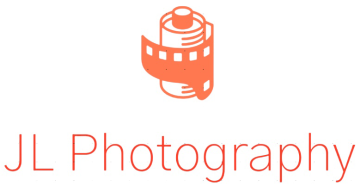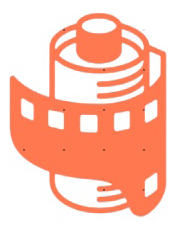It wasn’t a dramatic “aha” moment that pulled me toward film photography. More of a slow burn, a growing whisper that eventually became too loud to ignore.
I’d been shooting digital for years. The immediacy, the flexibility, the endless experimentation without worrying about film costs or development time. But something was missing.
Film photographs in galleries, online, or in old family albums captivated me with their depth. A tangible quality to the colors and grain that spoke to something deeper than technical perfection.
The real spark came from a desire to slow down.
Digital photography can be so rapid-fire. Hundreds of photos in minutes, instant feedback, delete and reshoot. While powerful, I realized I was sometimes shooting without truly seeing, without being fully present.
The Transformation of Seeing
With film, every frame counts. Literally and figuratively.
Knowing I only have 24 or 36 exposures forces me to be selective and intentional before even raising the camera. I spend more time observing the scene, really looking at the light, the composition, the moment.
“Is this truly worth one of my precious frames?” This question transforms photography into a meditative process.
This deliberation has made me a more patient photographer. More willing to wait for the right light, for a person to move into position, for a fleeting expression to appear.
Because I can’t instantly review the shot, I trust my instincts more. I “see” the photograph in my mind’s eye before clicking the shutter.
The film renaissance isn’t just nostalgia. The market is projected to grow from $2.8 billion in 2024 to over $4 billion by 2031, with a 5% compound annual growth rate, according to market research.
This resurgence speaks to something fundamental about our relationship with images in an increasingly digital world.
The Emotional Connection
With digital, gratification is instant. The image appears seconds after capture.
Film offers delayed gratification and builds a unique anticipation. From the moment I finish a roll until I receive the developed images, days or weeks might pass.
When I finally get those negatives or scans back, it’s like unwrapping a gift. Excitement mixed with nervousness. Did I nail the exposure? Was my focus sharp?
Often, there are wonderful surprises. An image might turn out better than remembered. A subtle detail I hadn’t consciously noticed becomes a beautiful feature. The way the film stock rendered colors adds a quality I couldn’t have predicted.
The biggest emotional difference is that sense of rediscovery. It’s revisiting a memory through a slightly different lens, filtered through time and the analog process.
There’s a tangible connection when holding a negative strip to the light. It feels more permanent, more real than a file on a hard drive.
Research confirms this emotional connection, noting that “film’s inherent imperfections add character and authenticity to photographs… conveying a sense of nostalgia, emotion, and timelessness that digital filters struggle to emulate authentically” (Analog Cafe).
Two Media, Two Stories
A couple years ago, I photographed an abandoned industrial site. Late afternoon light streamed through broken windows, dust motes dancing in the air.
I shot it with both my digital camera and my medium format Mamiya RZ67 loaded with Kodak Portra 400.
With digital, my approach was comprehensive. I bracketed exposures to capture the full dynamic range. Multiple compositions, different focal lengths, thoroughly documenting the space.
The resulting digital images were sharp, detailed, and clean. Every texture in the crumbling brickwork, every precise ray of light was recorded. They told a story of poignant decay, an almost forensic record of the place.
With the Mamiya, the process itself changed. Lugging that medium format beast meant moving slower, more deliberately. I took only a handful of carefully considered frames.
When the film scans returned, they told a subtly different story. Portra 400 rendered the scene with warmth and softness, even in decay. The highlights in the windows had a creamy, almost ethereal quality. The shadows held gentle gradations and hints of color.
The film images felt less like documentation and more like a memory. The story shifted from “this is exactly what it looked like” to “this is how it felt to be there.”
The medium itself isn’t just a tool for capture. It’s an active participant in shaping the narrative.
The Tangible Connection to History
Handling a vintage film camera creates a completely different sensory experience compared to modern digital equipment.
My Mamiya RZ67 is heavy, entirely mechanical aside from the meter. Every action is deliberate and audible. There’s a satisfying heft that speaks to a time when things were built to last.
Winding the film advance lever produces a distinct mechanical sound and feel. Focusing manually on a large ground glass screen, watching the image pop into sharpness, becomes an engaging, almost meditative act.
This tactile interaction reminds me I’m working with a mechanical object photographers have used in various forms for over a century. When I hold a camera that might be 50 years old and still functions perfectly, there’s a profound connection to all the photographers who used similar equipment before me.
I think about the iconic images made with these cameras. The historical moments they’ve documented. The artistic movements they’ve been part of.
It’s holding a piece of history in my hands.
A Guide for the Curious
For those interested in trying film, my biggest advice is to keep it simple and embrace the learning process.
Start with a reliable 35mm SLR (Single Lens Reflex). These cameras allow you to see directly through the lens, so what you see is what you get. They offer control over focus, aperture, and shutter speed, which is key to learning fundamentals.
Look for models from the 1970s to 1990s. The Canon AE-1, Pentax K1000, Minolta X-700, or Olympus OM-1 are excellent beginner options. Ensure it comes with a 50mm lens, a versatile focal length to start with.
For film stock, begin with forgiving options. Kodak ColorPlus 200 or Kodak Gold 200 for color. They’re affordable and produce lovely, warm colors while being quite forgiving of exposure errors.
For black and white, Ilford HP5 Plus 400 or Kodak Tri-X 400 are versatile classics with good latitude for handling over and under-exposure.
For your first rolls, use a professional lab for development. Ask for “develop and scan” to receive digital files of your images. This allows you to focus on the shooting experience before investing in home development equipment.
The Pentax K1000 deserves special mention as “one of the cheaper 35mm SLRs you can pick up second hand, yet also one of the most usable cameras… stripped back and simple, with just three controls: focus, aperture and shutter speed” (TechRadar).
Creative Constraints as Assets
Film’s limitations often become creative catalysts.
Once while hiking to photograph coastal sea stacks, I had only two frames left on my last roll of Velvia 50. As I reached my viewpoint, clouds rolled in, the golden light disappeared, and the wind picked up.
My digital instinct would have been to fire off dozens of shots, bracketing extensively as the light changed.
Instead, having only two frames forced me to stop and truly analyze the scene. I couldn’t afford a “safety shot.”
I watched the waves crash against the rocks. Observed the patterns in the swirling clouds. Waited.
For my penultimate shot, I braced against a rock, timed a large wave, and accepted a longer shutter speed that would intentionally blur the water against the solid form of the rock.
For the final frame, I focused tighter on just the peak of a stack with dramatic clouds behind it, waiting for the perfect moment of cloud texture and light.
When those slides returned, they were among the most powerful from the entire trip. The constraints stripped away excess and forced me to find the essence.
If I’d had unlimited digital shots, I might have captured the scene adequately. But I doubt I would have found those specific, thoughtful compositions.
Sometimes, having less choice leads to stronger creative decisions.
Film’s Future in a Digital World
Film photography will continue to evolve and hold a unique role in visual storytelling.
In a world saturated with easily taken, easily deleted digital images, film offers tangible, physical connection. A negative or print is an object with permanence and preciousness.
The deliberate process of film fostering a mindful approach isn’t just nostalgia. It’s a conscious creative choice. For many, it’s a way to slow down, to engage more deeply with subject and craft, to make each frame count.
Different film stocks have distinct personalities in color rendition, contrast, and grain structure. These aren’t flaws but desirable aesthetic qualities digital filters try to emulate but rarely perfectly replicate.
Choosing film in an overwhelmingly digital age signals dedication and craftsmanship. For visual storytellers, it can subtly communicate that the work was created with particular care and intention.
Film’s future role will be to offer authenticity and timelessness. The tactile nature and unique aesthetic can create deeper emotional connections with viewers. The imperfections and character make images feel more human and relatable.
In a world of fast content, film can be the photographic equivalent of the slow food movement. It emphasizes quality, craft, and meaningful connection to process and product.
Beyond Photography
The meditative quality of film photography has permeated other areas of my life.
The core of film photography is learning to see acutely before pressing the shutter. This has spilled over into daily life. I find myself more observant of small details. The way light filters through leaves on my walk to work. Fleeting expressions on faces in a coffee shop. Textures in an old building.
The “every frame counts” mentality has influenced my decision-making. I’m more inclined to pause and reflect before acting rather than reacting impulsively. Whether in work projects, personal commitments, or significant purchases, I weigh options more carefully.
Film is the antithesis of instant gratification. The wait for development has cultivated greater patience. I’m more comfortable with processes that take time and more appreciative of anticipation itself.
Learning to embrace “imperfections” in film has made me more accepting of imperfection elsewhere. Not everything needs to be flawless. Sometimes beauty lies in the unexpected or slightly off-kilter.
Photography “offers a powerful way to ground ourselves in the present moment. By encouraging us to slow down, observe, and connect with the world around us, it enhances mindfulness and helps us find focus amid life’s distractions” (East End Arts).
The most meaningful discovery from working with both film and digital is this: Each medium teaches different yet equally vital aspects of what it means to be a photographer. The magic happens not in choosing one over the other, but in allowing the lessons from each to inform and enrich your practice with both.
Film taught me the profound value of intention and patience. Digital taught me the power of experimentation and adaptability.
They are not adversaries but complementary teachers.
Photography is less about the specific tool and more about vision, understanding of light, and connection with the subject. Film and digital are simply different languages through which to tell a story or express an observation.
Being fluent in both broadens your vocabulary and makes you a more versatile, adaptable, and ultimately more insightful visual storyteller.
It’s about cultivating a holistic understanding of the craft, appreciating its history while embracing its future.

